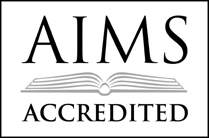Pre-Kindergartners Represent Identity and Emotions through Self-Portraiture
February 1, 2018 by
Our Pre-Kindergarten class began their year with the overarching theme of trying to understand our identity. Early on, a child said, “your identity is like yourself.” We decided to look at our identity through our feelings because while our feelings don’t define us, they are an immeasurable part of us and we experience a multitude of them each day. Every day, we introduced children to new vocabulary – both linguistic and social-emotional – by defining and discussing a different mood. Some of the daily moods the Pre-K students studied were Quixotic, Contemplative, Listless, Misunderstood, Mischievous, and Inspired. See our video of one Pre-K student discussing one of the daily moods – cranky.
We decided to focus our study on four feelings – happy, sad, silly, and brave – and considered the ways we express ourselves, what evokes these feelings, and what we need when we experience them. The children represented these feelings by studying portraiture, and then creating multiple self-portraits using a variety of mediums and inspired by different artists. For their “happy portraits,” the children created colorful, larger-than-life portraits inspired by the work of children’s author and illustrator Todd Parr. For their “sad portraits,” the children used pencil and watercolor markers to evoke the style of illustrator Norman Rockwell. For their “silly portraits,” students used mixed media and fantastical colors and shapes inspired by Pablo Picasso. For their “brave portraits,” students transformed themselves into superheroes using photography and animation based on the pop art of Roy Lichtenstein. At the Bayit Patuach (Open House) last week, we opened our gallery where the children’s series of self-portraits were on display, along with presentations about their learning and their process.
Throughout the semester, we connected our study of identity to all areas of the curriculum, including early literacy skills, writing, math, science, research, representation, and of course, art.
Early Literacy Skills
Each day, the students learned a new “daily mood” to help them expand their vocabulary, and to learn about feelings, both familiar and unfamiliar, that we explored and described as a class. Some of the daily moods included words like “mischievous,” “contemplative,” “heroic,” and “cranky.” The students thought about whether the feelings were positive (fill our bucket and make us feel good), negative (empty our bucket and take more from us than they give), or so-so (a feeling that can either fill or empty our bucket, depending on the context). We further explored these new words and feelings through literature, seeing how different book characters identified, communicated, and dealt with each feeling.
Writing
Throughout the semester, the children kept a “feelings” journal, where they wrote an entry for each of the four feelings we studied in depth (happy, sad, silly, and brave). For each feeling, the children were given three prompts to answer: 1) How do you express yourself when you feel this way? 2) What makes you feel this way? and 3) What do you need when you feel this way? For their “brave” entry, the children were encouraged to write about an experience they overcame or underwent that resulted in them feeling brave. After answering all three questions, the children chose one question to illustrate and then described their illustration using inventive spelling.
Math and Science
The children’s work on their self-portraits helped them to apply and grow their understanding of numerous mathematical and scientific skills in the first semester. For example, the students developed their understanding of the intricacies of spatial awareness when transferring their “happy” portrait from standard size paper to large poster board to scale. The students learned about symmetry and asymmetry by looking at something from a different perspective and using geometric shapes in their “silly” portraits, inspired by Pablo Picasso. While working on their “brave” portraits, the children worked with standard as well as non-standard units of measurement, identified and sequenced the numbers on the watercolor markers, and learned about contrast and transparency. The students also experimented with shadow and light when tracing their “sad” portraits. Furthermore, the students’ feelings exploration led them to incorporate their senses by thinking about the way our bodies react to external stimuli and the feelings such stimuli evoke in us. In our sensory room, the children engaged with the texture board, frames, and our sand table, noting the physical input of each texture and which feeling it evoked.
Research, Representation, and Art
As part of our research into portraiture, we went to the National Portrait Gallery to learn about the various components of a portrait, including the use of color, space, media, the setting, and the techniques selected by the artists. We prompted the children to think about the feelings the portraits evoked in them and why.
The children applied the lessons from their gallery study and classroom explorations when they represented each of the four main feelings – happy, sad, silly, and brave – in their self-portraits. Each of the four portraits was inspired by a different artist whose work elicited a particular feeling, and was created using different materials and techniques. The children not only channeled each feeling into their carefully and creatively composed self-portraits, but also communicated their understanding verbally as they explained their thought process behind their artistic decisions.
Happy Portraits
The students’ “Happy Portraits” were inspired by children’s author and illustrator Todd Parr. Todd Parr’s illustrations use simple lines, shapes, and bright colors. His stories elicit positive feelings and close with a meaningful and encouraging message, making him a clear choice for our “happy” inspiration. The children wore their happiness on their sleeves and their smiles wide across their faces while painting their large-scale, brightly colored portraits. The children practiced their skills in tracing, drawing to scale, spatial awareness, and fine motor control to create their “happy” artwork.
Sad Portraits
The students’ “Sad Portraits” were inspired by American author, painter, and illustrator Norman Rockwell. At first deemed unskilled and heavily criticized, Rockwell gained recognition when he began illustrating serious paintings depicting controversial themes, including racial inequality and World War II. Rockwell was invited to draw portraits of Presidents as well as Hollywood stars, in which he used dull colors and left out details, painting his subjects just past their neckline, encouraging the observer to focus on the subject’s face. The students used pencil and watercolor markers on canvas to create their own Rockwell-style portraits of their faces, practicing tracing, shading, photography, and empathy.
Silly Portraits
The students’ “Silly Portraits” were inspired by Spanish artist Pablo Picasso. Picasso is one of the pioneers of cubism, a form of abstract art which uses geometric shapes and portrays an image from multiple perspectives. Picasso’s use of geometric shapes and lines and improper placement of facial features in his cubist portraits inspired us to create a self-portrait unlike what we see when we look in the mirror. As a result, the children created funny and unrealistic representations of themselves using a variety of mixed media, and were encouraged to think outside the box and push the boundaries of their imagination. At the same time, the students practiced skills such as asymmetry, geometric shapes, measurement, spatial awareness, and fine motor strength.
Brave Portraits
The students’ “Brave Portraits” were inspired by American pop artist Roy Lichtenstein. Lichtenstein’s pop art style stands out as bold and captivating. Throughout our conversation about feeling brave, the children consistently arrived at a common theme: Superheroes. Much of Lichtenstein’s art imitated comics and incorporated the use of primary colors, bold black lines, Ben-Day dots, superheroes, speech bubbles, and onomatopoeia. After posing brave for a photo, the children incorporated technology using a web application that alters photographs to look like comics. The children manipulated their photo in the app and added backgrounds, filters, and an onomatopoeia to resemble a Lichtenstein piece. They also added a personal affirmation that they say to themselves when they need to feel brave. While doing so, the students practiced inventive spelling, fine motor control, spatial awareness, and the concepts of contrast and transparency.






